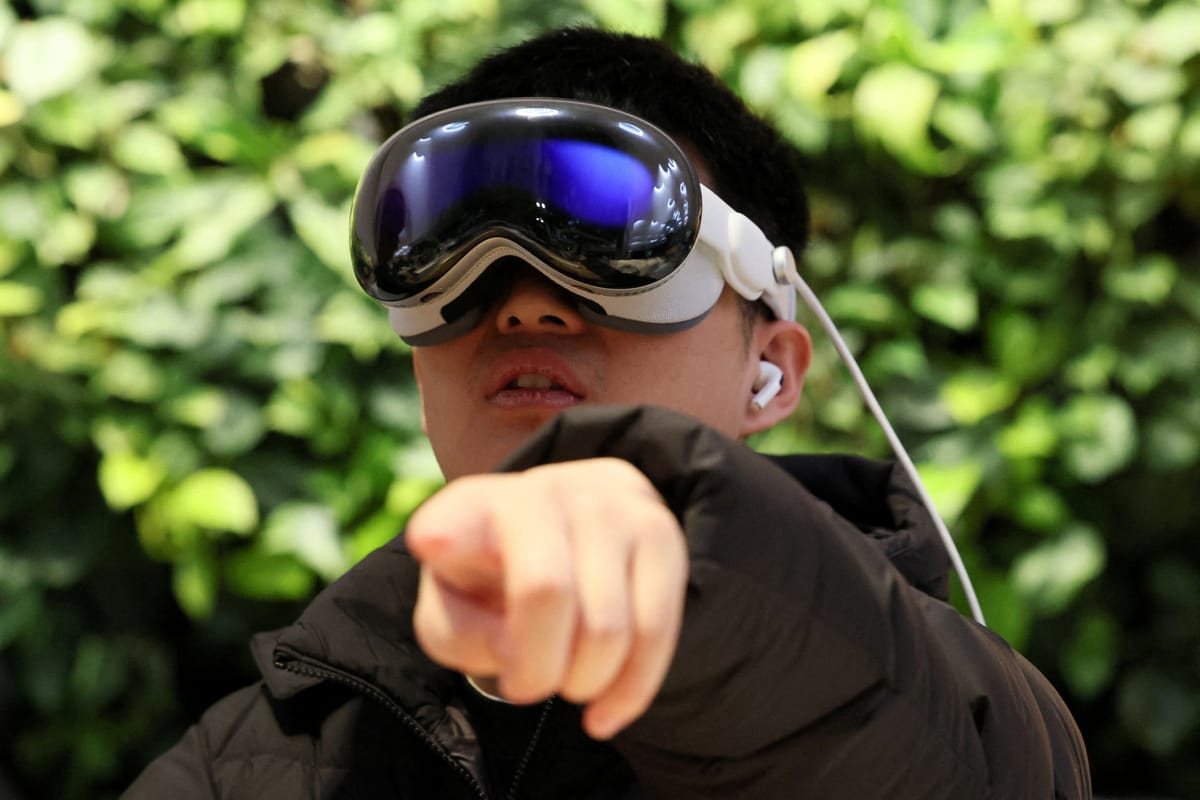Will tech like Apple’s Vision Pro shake our grip on reality?
It's no secret that new tech takes time for us humans to adapt to.

A few minutes every morning is all you need.
Stay up to date on the world's Headlines and Human Stories. It's fun, it's factual, it's fluff-free.
Apple's Vision Pro is the newest gadget on the mixed or augmented reality (AR) market, and Apple is touting it as a new era in "spatial computing." It's been available for a little over two weeks now, and Apple fans everywhere are marveling at its features – from Zoom calls seemingly popping up right in your living room to state-of-the-art entertainment experiences.
But we've also seen some people wearing the headset in public in some inappropriate situations – like while driving a car, for example. This and the very nature of the immersive experience this new gadget offers brings up one important question. Can technology like the Vision Pro make us lose touch with reality?
It's no secret that new tech takes time for us humans to adapt to – in fact, before the release of the iPhone in 2007, none of us were used to carrying around a whole computer in our pocket. But now, with the Vision Pro, we're essentially able to put a computer right on our faces and transform the reality we're sitting in.
It's not the first time we've seen something like this. Google's attempt at AR eyewear with its Google Glass, first launched in 2013, famously flopped, with "glassholes" everywhere disappointed when the company scrapped the whole thing last year. But the Vision Pro is off to a good start, with just its pre-order sales nearing 180,000.
Sure, it's got some pretty cool features. From impressively sharp displays to eye and hand tracking controls where you can use your eyes kind of like a mouse and your fingers like the button. But it's not really the futuristic sort of AR many have imagined, where you're looking directly at the world and digital info is displayed in your frame of vision. Instead, it uses a video feed – granted, a really detailed, sharp one – to feed the outside world into your viewpoint.
It's also got some features to modulate just how immersed you are – from allowing people to fade into your view when they walk into the frame (you know, so you know someone is standing in front of you) to displaying a video image of your eyes on the outside of the device, a feature called EyeSight, so that other people feel like they can make eye contact with you.
But the overall consensus is that it's just not quite hitting the mark and skirting near the Uncanny Valley more often than not.
"Imagine looking someone directly in the eyes and talking to them without knowing if they can see your eyes — it's weird!" The Verge's editor-in-chief, Nilay Patel, said in a review of the headset.
Eleven researchers spent time studying the effects of the "passthrough video" tech that enables this mixed reality, publishing their findings in Technology, Mind, and Behavior. They found that immersing ourselves in virtual, augmented and mixed realities for long periods could even rewire our brains, changing how we perceive the world and each other. Move over Plato's Allegory of the Cave.
The study said that while "the passthrough experience can inspire awe and lends itself to many applications," it will "also likely cause visual aftereffects, lapses in judgments of distance, induce simulator sickness, and interfere with social connection."
"The biggest tradeoff of all is that using the Vision Pro is such a lonely experience, regardless of the weird ghost eyes on the front," explains Patel. "You're in there, having experiences all by yourself that no one else can take part in. After using the Vision Pro for a while, I've come to agree with what Tim Cook has been saying for so long: headsets are inherently isolating."
So, while it's safe to say this kind of tech could be super useful for education, medical training, entertainment, long-distance communication and a ton of other applications, maybe we don't want to overdo it. Even one of Apple's own promo videos shows someone taking off the Vision Pro to go outside. Let's keep that in mind.
"The world's going to be just fine," says Jeremy Bailenson, director of the Virtual Human Interaction Lab at Stanford, who led the study. "People adapt to media. These headsets are incredible. But philosophically, I do not believe we need to be wearing these headsets for hours every day."




Comments ()